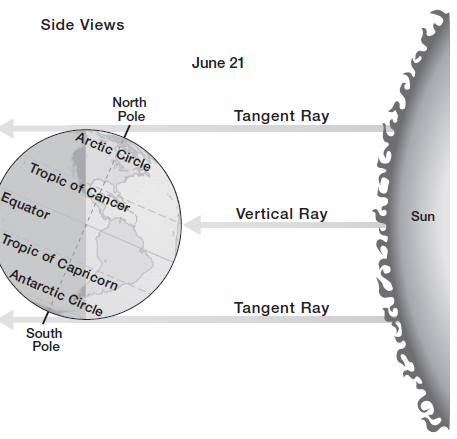What happens to the length of day (the number of hours of daylight) as you move north of the equator?

Figure 9-2: Earth–Sun relations on June solstice.
Noting the orientation of the circle of illumination on June 21, explain the above question.
What will be an ideal response?
Length of day increases.
You might also like to view...
Which of the following statements describes an important principle in the electrification of a cumulonimbus cloud?
A. Raindrops are always positively charged. B. Supercooled water is always negatively charged. C. Ice crystals are always negatively charged. D. Positive ions transfer from a warm object to a cold object.
What is the primary advantage of hydraulic mining, and what are its drawbacks? What will be an ideal response?
If you're caught outside in a thunderstorm, the best thing you can do to protect yourself from lightning is to lie face down in a ditch
Indicate whether the statement is true or false
Radioactive materials can be eliminated from the environment using certain types of plants, such as sunflowers.
Answer the following statement true (T) or false (F)